#Lilyan margaret
Text
In most societies for which we have information, men are the warriors, hunters, and processors of raw materials related to weaponry and tools. Women have sometimes acted as full-time warriors and hunters, wielding the same weapons as men and displaying the same success (see discussion of the Dahomeans that follows). Such examples, however, are few and occur under special circumstances.
In a study of the sex assignment of 50 work activities in the 186 societies of the Standard Cross-Cultural Sample, George P. Murdock and Caterina Provost identify 14 activities that are performed strictly by males in nearly all societies. These activities are of two general kinds: 1) hunting and butchering, and 2) processing of hard or tough raw materials (such as smelting of ores, metalworking, mining, and quarrying).
There are no technological activities that are strictly feminine, though cooking and the preparation of vegetal foods come close. Murdock and Provost explain the occurrence of the strictly masculine tasks on the basis of the greater physical strength of males and their superior capacity for mobilizing it in brief bursts of excessive energy. They also suggest that females are attached to the household by "burdens of pregnancy and infant care."
Douglas R. White, Michael L. Burton, and Lilyan A. Brudner provide a different explanation for the strictly male tasks. Although they do not deny the existence of human sexual dimorphism, they note that there is plasticity in the development of physical strength, so that cross-culturally there is considerable diversity in the degree to which males are stronger than females. In addition, they observe that many of the strictly male tasks require relatively little physical strength. Danger, long distance travel, and "economies of effort," they suggest, more than physical strength or the constraints of child care, explain the existence of strictly male activities. Other anthropologists have also commented on the importance of danger and travel. Judith K. Brown, for example, has argued that given the great importance attached to bearing children, it would be inefficient for a society to expose nursing mothers or childbearing women to danger. Ernestine Friedl points out that men are the expendable sex because they are not the bearers of new additions to the work or warrior force. White, Burton, and Brudner take the argument a step further by introducing the notion of efficiency in the utilization of learned skills: "There are economies of effort in having the same persons perform adjacent tasks in production sequences, since adjacent tasks often require similar technological skills, and are often performed in similar contexts." Thus, the performance by women of tasks that are consistent with nursing and child care (in many but not all cases) and the performance by men of tasks that are consistent with travel and danger are a consequence of efficiency considerations - not of intrinsic features of the tasks.
It is also helpful to understand that strictly male activities provide males with a means for defining and displaying the adult male gender identity. Usually people define their sense of self as male or female by what they do. The female gender identity is automatically defined, at least for tribal peoples, by childbearing and nursing. What comes to women naturally and provides them with a set of discernibly female activities comes to men more artificially. Perhaps because women have ways of signaling their womanhood, men must have ways to display their manhood.
Stressing the importance of the male role for male gender identity, Margaret Mead says: "The recurrent problem of civilization is to define the male role satisfactorily enough. . . so that the male may in the course of his life reach a solid sense of irreversible achievement, of which his childhood knowledge of the satisfactions of childbearing have given him a glimpse." The male role is often defined as what the female role is not. If female activities are associated with the qualities of reproduction, male activities are associated with the opposite qualities. As femaleness is linked to fertility and growth, maleness is linked to infertility and death. Sometimes these sex-linked attributes are projected onto animate and inanimate objects in the environment. For example, in a New Guinea highland society, certain foods are identified with the "juicy, soft, fertile, fast-growing" qualities of women and other foods are identified with the "dry, hard, infertile" slow-growing qualities of men. Men in this society publically avoid the female foods (which they may eat in secret) in order to preserve their gender identity and, likewise, women publically avoid the male foods.
The equation between hard:soft—infertile:fertile—male:female is present in many societies. The hard:soft—male:female equation is implied by the kinds of manufacturing activities assigned to men as compared to those assigned to women. As noted before, raw materials that are hard or tough are processed strictly by males. Soft and pliable raw materials are more often (though not exclusively) processed by females. Only men work in metal, stone, bone, and wood. Women, more often than men, make baskets and mats, do loom weaving, make pottery, and spin.
-Peggy Reeves Sanday, Female Power and Male Dominance: On the Origins of Sexual Inequality
11 notes
·
View notes
Text
youtube
Coming soon: Eyes by Imania Margria
#bookstagram#bookstore#new release#coming soon#Imania Margria#Lilyan margaret#Lilyan margaret publishing#books#new adult#new adult romance#romantic suspense#imaniamargria#Youtube
3 notes
·
View notes
Text
MODELING INTO THE MOVIES
August 8, 1936

By Jeannette Meehan, HOLLYWOOD
From the women’s angle, there are simply too many gorgeous newcomers in Hollywood. That fact is plain.
From the gentlemen’s angle, Hollywood is pleasantly crowded with the most alluring bits of femininity ever to delight the bald-headed row. This fact is even plainer. Oh, say it isn’t so, but there a new day dawning in the west for the Stage Door Johnnies.
Whence comes this influx of Eves? Who are these girls of such attractive physical make-up?
Well, sir, most of them are ex-models.
The highway and by-ways to Moviedom are past counting. Those most traveled have been the extra route, the beauty contest route or the I-have-a-relative route. Yesterday our newcomers were night club crooners, radio personalities and million-dollar heiresses. Today the majority of candidates for stardom are no longer being recruited from these avenues. It now quite obvious that any girl who has been a model approaches the casting office with an asset that permits her to pass up the waiting list.
Oh, phooey, what’s a model got that the others haven’t?
Well, when Radio Picture wanted five beauties for the fashion show sequence in “Roberta” they tested 30 girls, and then sent out an S.O.S. to the ranks of professional models. That was a year ago. Those five models so delighted the camera that they’re still under contract. (1)

Just a few months ago, when M-G-M went scouting for 22 modern Venuses for “The Great Ziegfeld”, they discovered that the ex-models had a lot more poise and personality than the kids who were merely movie struck. Eighteen of those 22 “Ziegfeld Girls” were former models. Fourteen of the 18 were given contracts. You just can’t argue with “figures” like that, or should I say with “figures like theirs"? (2)
“Model your way to the movies” isn’t just a catchy phrase. Models come to Hollywood already equipped with the elementary essentials which studios spend a great deal of time and money trying to hammer into inexperienced youngsters. Models have already served their apprenticeship to the art of carriage, grace and charm. They’ve already passed a certain type of beauty contest. The girl whose picture helps to sell beauty preparations has to have a face that leads you to believe that the product is worth trying. A pair of silk stockings modeled on muscle-bound or "spindle” legs would scarcely lure you to the hosiery department.
You never see a good model stumble over her train. She remains regal and sure-footed in the most confusing draperies.
Figuratively speaking, these girls are above reproach. Most fashion houses require that their models be above medium height, broad through the shoulders, slim through the hips, and that their proportions be symmetrically arranged. Thus, they’ve long since graduated from the routine of diets, masseurs, and classes for corrective posture that faces tire average beginner.
In other words, movie producers are finding out that modeling is a natural complement to screen work. Film executives are discovering that the girls who come to them from portrait and artists studios and from fashion salons are far ahead of those who approach Hollywood's pot of gold with no training.
Not only that, but these ex-models seem to be well-mannered, well-educated girls whose off-screen poise and chic rivals that of their screen betters.

Oh, dear are they gorgeous? They're enough to make us ordinary girls forget to look before we leap. Just for instance, take Pauline Craig [above] (3), an auburn-haired, statuesque beauty from Cleveland, O. She’s five feet six and one-half inches tall, weighs 118 pounds, and has a figure that only Jean Harlow (4) could be unconcerned about.
Miss Craig was a “Ziegfeld” girl - now she’s under contract. She skipped the first grade in motion picture training, and I guess we all know why. She was a model. Her glorious smile has appeared in hundreds of advertisements. As a fashion model she worked for I. Magnins. (5)
Are you wondering if these girls observe any general rules for the maintenance of health and beauty? Miss Craig will tell you that most of them prefer fresh air to smoky drawing rooms, and that they substitute milk for alcoholic beverages.
Incidentally, her hobby is collecting pictures of the Dionne quintuplets. (6)
Another girl recruited from the model ranks for “The Great Ziegfeld" was Wanda Perry (7), a vivacious brunet from Brooklyn. She's five feet five and one-half inches tall, weighs 120 pounds, and has brown eyes.
With her classic features and her superb figure, there was a great demand for her in New York’s portrait galleries and exclusive clothing establishments. She has posed and modeled for Vogue, Harper's Bazaar, McFadden Publications and for tooth paste ads.
With an already perfect camera presence, she is not to be enrolled in the studio's kindergarten for beginners.
Over at Paramount there’s a queenly blond named Elizabeth Russell (8), probably the best known of former New York models. A favorite of such distinguished illustrators as Russell Patterson, James Montgomery Flagg, McClelland Barclay, Dean Cornwell, Paul Hesse, and Steichen, the photographer. Miss Russell is now in possession of a flattering long-term contract.
Artists agree that her features are photographically perfect. Artist or no artist, they’ll look perfect to you! She has modeled hose, nightgowns, and coiffures. Her blonde beauty has helped to sell cigarettes, jewels, soap, sheets, automobiles and first-aid kits. Very soon she'll be helping Paramount sell “Girl of the Ozarks,” her first picture (9). Miss Russell is five feet eight inches tall, weighs 118 pounds, has blue eyes and naturally blond hair.
Another beautiful blonde who modeled her way to the movies is Louise Stuart (10), a former Chicago debutante. After graduating from Miss Mason's Castle (11) she went to New York to visit former school chums. It was during one of these visits that she was persuaded to pose for cigarette ads. One good look at her flawless countenance, and modeling jobs were her for the asking. With plenty of time on her hands, and nothing to do with it, she went to work.
Miss Stuart attributes most of her success with the test director to her experience as a model. Posing for artists and photographers, she says, gave her a self-assurance which she has never lost. You'll see her first in “Lady Be Careful." (12)
A third Paramount prize is Veda Ann Borg (13), a stunning, red headed girl from New York. Before the studio signed her to a long-term contract, her divine proportions and sparkling personality had created a sensation in the modeling field.
One of the most exquisite of Hollywood's newcomers is brunette Anita Colby (14) who stands five feet seven inches tall without her high-heeled shoes. Her face has smiled at you from magazine covers, commercial advertisements and from the pages of the nation's smartest fashion periodicals. Her beauty is attractively framed in poise, wit and charm. She is conversant with world affairs, music, art and literature. Pictorially speaking, she’s a model of perfection. Radio proudly points to her name on its contract list.
Radio has two other "model" charmers in the persons of Maxine Jennings (five feet eight inches tall), and Lucille Ball (five feet six and one-half inches tall). Miss Jennings (15), a former model for the famous couturier, Jean Patou, is a stately redhead as handsome a creature as you ever laid your eyes on. You'll soon be seeing her in featured leads.

Miss Ball (above), a blue-eyed blonde from Montana (16) and former model for Hattie Carnegie, is considered an important trump in the studio's hand. Her bosses have thus far cast her in wise-cracking roles, hoping to develop her into a counterpart of the late Lilyan Tashman (17) - but Lucille doesn't seem to need much help along those lines. Her poise, her suave delivery and her flair for clothes have already added to the gaiety of nations and have cannoned her well along the road to stardom.
One of the most beautiful of the "model" brunettes is Hester Deane (18) who is doing much to enhance M-G-M productions. Her likeness on the backs of magazines has caused many a gentleman to change his brand of cigarettes, and she posed for automobile body advertisements long before the studio discovered that her presence on screen would “up” the grosses.
She was born in Oklahoma City. Her education included art and music. Now, when she isn’t modeling or working in pictures, she designs clothes, takes piano lessons, and studies philosophy.
A good look at Mary Jane Halsey (19) will have different reactions on you, depending on your sex. If you’re a woman, you’d just as soon she broke her neck.
Miss Halsey was born in Milwaukee. After her family moved to Los Angeles she became a model for a famous cosmetician. She is five feet six inches tall and weighs 120 pounds. She has blue eyes, and ‘shhhhhh’, she writes poetry.
If these "model" newcomers get any taller, a few of our leading men will have to wear stilts. Extreme height, which has sounded the gong for many a beginners’ career, doesn't seem to be a handicap for the ex-models. When these lovely girls began to invade Hollywood, apparently the enthusiastic producers forgot all about the traditional physical specifications for screen heroines. There was a time when all actresses had to be extremely petite and slim, like Gloria Swanson and Colleen Moore, and, more recently, like Claudette Colbert and Margaret Sullavan (20). Unless you were a diminutive little trick about five feet two inches tall, and weighed less than 100 pounds, you might just as well have stayed on the farm. Greta Garbo and Kay Francis (21) were overlooked for a long time because of their height.
But the restrictions seem to have been called off. It appears that models can grow as tall as they like without the danger of facing dismissal from the casting office. Margaret Lyman (22), one of the prettiest of the model group to win a picture contract, stands five feet nine inches in her stocking feet, and weighs 129 pounds.
One of the most photographed models of the country, Miss Lyman has posed for Vogue, Harper's Bazaar, The New Yorker and for cigarette and soft drink ads. She has brown hair and brown eyes. She wears a larger shoe than Garbo.
And no less charming is pretty Jane Hamilton [below] (23), another popular girl who found her way into pictures through the route of her professional success as a model.

# # #
FOOTNOTES FROM THE FUTURE

(1) “Roberta” was released by RKO on March 8, 1935. It was Lucille Ball’s 21st film. Models were needed for the fashion sequences. The film also employed models Virginia Carroll, Diane Cook, Lynne Carver, Lorraine DeSart, Betty Dumbries, Myrna Low, Margaret McChrystal, Marie Osborne, Wanda Perry, Donna Mae Roberts, and Kay Sutton. In addition to Lucille Ball, Wanda Perry, Maxine Jennings, and Jane Hamilton were in the film and profiled in this article.

(2) “The Great Ziegfeld” was MGM’s 1936 biopic of Florenz Ziegfeld, the showman who glorified female beauty on stage. Lucille Ball was not in this film, but was later part of the cast of “Ziegfeld Follies” (1951). This film employed dozens of showgirls and models to play the Ziegfeld Girls. Those profiled in this article include Pauline Craig, Wanda Perry, Hester Dean, Mary Halsey, and Margaret Lyman.
(3) Pauline Craig (1914-97) made her screen debut in “The Great Ziegfeld” but only did five more films, leaving the business in 1939.
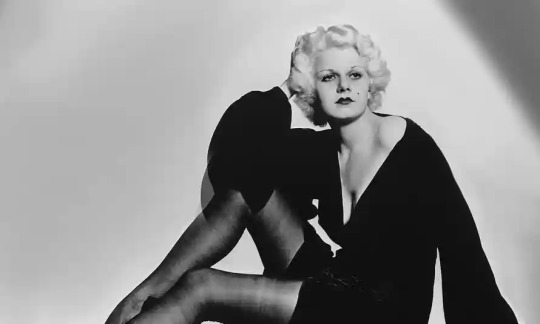
(4) Jean Harlow (1911-37) likely did not know or care about Pauline Craig, even if Craig’s figure did give Harlow a run for her money. She was known as the original platinum blonde sex symbol. She died at age 26, at the peak of her popularity. MGM closed for her funeral.

(5) I. Magnin & Company was a San Francisco, California-based high fashion and specialty goods luxury department store. It expanded across the West into Southern California and the adjoining states of Arizona, Oregon, and later to Chicago, Illinois, and Washington, DC, metropolitan areas. Mary Ann Magnin founded the company in 1876 and named the chain after her husband, Isaac. The chain was bought out by Macy’s in 1994.
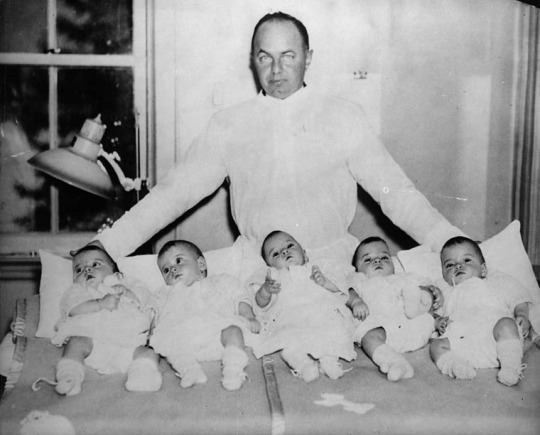
(6) The Dionne quintuplets (born May 28, 1934) are the first quintuplets known to have survived their infancy. The identical girls were born just in Ontario. All five survived to adulthood. The Dionne girls were born two months premature. The Ontario government and those around them began to profit by making them a significant tourist attraction. As of this writing, two of the girls are still living.

(7) Wanda Perry was born Helen Beuscher in Brooklyn, New York, on July 24, 1917. When she was sixteen, she was named Miss New York City, and was offered a movie contract by Earl Carroll. Helen moved to Hollywood and took her mother's maiden name, Wanda Perry, appearing in films as a showgirl, an Earl Carroll Girl, a Goldwyn Girl, a dancer in "George White's 1935 Scandals," a fashion model, an extra, a bit player and a stand-in for Lucille Ball! Her final film was as an extra in Lucy’s Mame (1974).
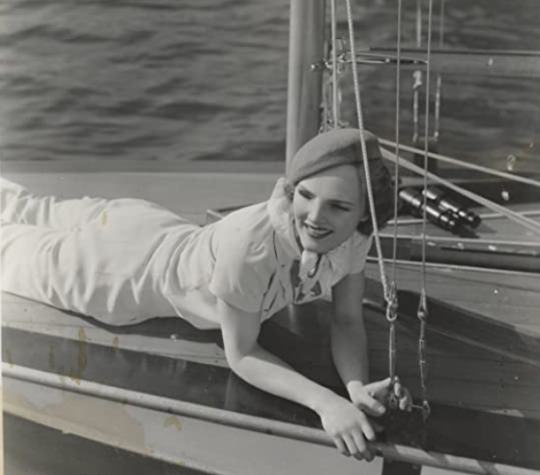
(8) Elizabeth Russell (1916-2002) was the sister-in-law of Rosalind Russell. She started doing films in 1936 and finished her career in 1960. (9) “Girl of the Ozarks” (1936) was a Paramount film also starring Virginia Weidler, Henrietta Crossman, and Leif Erickson.
(10) Louise Stuart did two pictures for Paramount back-to-back in 1936. That was the extent of her film career.
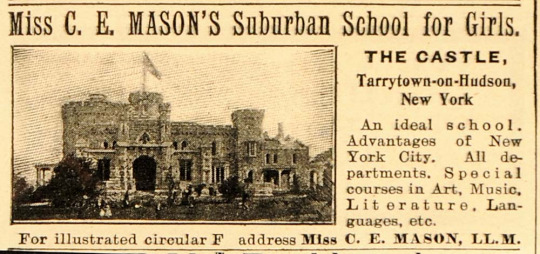
(11) Miss Mason’s Castle is a reference to Miss C.E. Mason’s Suburban School for Girls in Tarrytown-on-Hudson, New York. It was open from the late 1880s to 1934. The castle was razed in 1944.

(12) “Lady Be Careful” (1936) did not feature Louise Stuart as is said here, although records could be incorrect. The film did feature Elizabeth Russell, however.

(13) Veda Ann Borg (1915-73) did her first film for Paramount in 1936, and was continually employed in Hollywood until 1963. She was the first actress cast as Honeybee Gillis in “The Life of Riley” TV series, replaced a short time later by Marie Brown, then Gloria Blondell.

(14) Anita Colby (1914-92) was born Anita Counihan. Early in her career, at $50 an hour, she was the highest paid model at the time. She was nicknamed "The Face" and appeared on numerous billboards and ads, many of them for cigarette advertisers. She did three films in 1936 alone, the same year she appeared on 15 magazine covers in a single month. In subsequent years she only acted in three more films, returning to modeling.
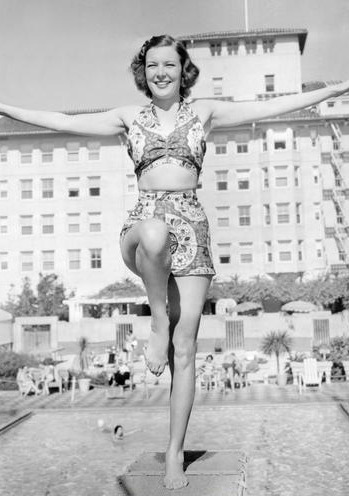
(15) Maxine Jennings (1909-91) did 10 films with Lucille Ball between 1935 and 1937. After 1938, her film appearances were sporadic. She made her final screen appearance on a 1968 episode of “Hawaii 5-O”.
(16) Lucille Ball (1911-89) is stated as being a blonde from Montana. She was actually a brunette from Upstate New York.

(17) Lucille is once again compared with Lilyan Tashman (1896-1934) a stage and screen actress known for her skill at verbal wit as well as her throaty delivery. She died at age 37, just one year after Lucille Ball arrived in Hollywood.

(18) Hester Dean became known as 'The Girl with the Fisher Body' after modeling for the Fisher Automobile Company. Her only film was “The Great Ziegfeld” (1936).
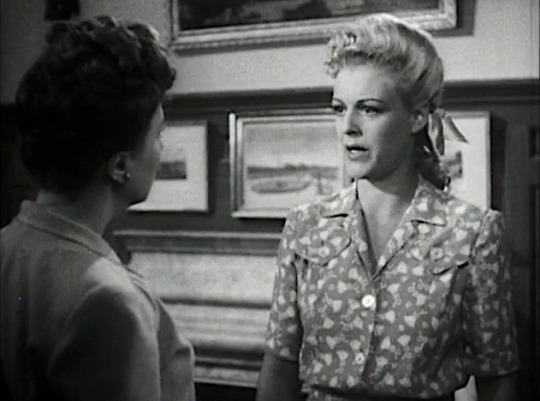
(19) Mary Jane Halsey (1913-89) was also in “The Great Ziegfeld” (1936) but by that time had done nearly a dozen films. She continued to act on screen until 1945.

(20) Gloria Swanson was 4′11″, Colleen Moore was 5′3″, Claudette Colbert was 5′5″, and Margaret Sullavan was 5′3″.

(21) Greta Garbo was 5′7″ (same as Lucille Ball), and Kay Francis was 5′9″.
(22) Margaret Lyman (1915-2002) was one of the models hired for “The Great Ziegfeld” in 1936. She did two more pictures before leaving screen acting behind.
(23) Jane Hamilton (1915-2004) was a Goldwyn Girl in “Roman Scandals” (1933) just like Lucille Ball. Hamilton, however, had done one previous film as a Goldwyn Girl, “Gold Diggers of 1933″. She did seven other films with Lucille Ball. Her final screen role was in 1949.
#Lucille ball#1936#Greta Garbo#Kay Francis#Jane Hamilton#Margaret Lyman#Gloria Swanson#Claudette Colbert#Colleen Moore#Margaret Sullavan#Hester Dean#Mary Jane Halsey#The Great Ziegfeld#Roberta#Goldwyn Girls#RKO#MGM#Lilyan Tashman#Maxine Jennings#Anita Colby#Vida Ann Borg#Lady Be Careful#Girl of the Ozarks#Elizabeth Russell#Wanda Perry#Dionne Quintumplets#I. Magnin#Jean Harlow#Pauline Craig
14 notes
·
View notes
Note
Do you know of any romances between classic Hollywood actresses?
i’m really no expert on this subject but–Janet Gaynor and Margaret Lindsay (they were cute little apple pies together) are two that you don’t see discussed very often. Janet was later linked to Mary Martin.
specific romances i can’t speak to the validity of, but some of the more well-known names that are pretty unanimously agreed on as having had romantic and/or sexual relationships with other women (or at least, attraction to) are Joan Crawford, Kay Francis, Marlene Dietrich, Lilyan Tashman, Greta Garbo, Tallulah Bankhead, Jean Acker, Louise Brooks, Alla Nazimova, Grace Darmond, Patsy Kelly, Blyth Daly… i’ve read of Hattie McDaniel here and there, but have never confirmed this so i can’t say as yet whether or not it’s likely. Natacha Rambova is often speculated to have been bisexual, and i believe Anna May Wong is written about, too, but again, i can’t confirm because i haven’t followed up on those claims.
i know i’m prob accidentally leaving out a great number of others, but i’m on like 2 hours of sleep rn, so that’s what i got.
6 notes
·
View notes
Photo

February, 1926 “As Worn By the Players” section in “The Motion Picture Director” magazine. Margaret Livingston, Dolores Del Rio and Lilyan Tashman.
10 notes
·
View notes
Text
Unwrap the yuletide thrills of this controversial Santa slasher
“Everything he’s been doing has a kind of logic to it – once you understand what he’s gone through.” So says Sister Margaret (Gilmer McCormick) of her former ward Billy Chapman (Robert Brian Wilson), who, towards the end of Charles E Sellier Jr’s Silent Night, Deadly Night, has embarked on a crazed killing spree while dressed as Santa Claus. The concerned nun is absolutely right.
For while Sellier’s debut feature is certainly a slasher, its central killer is much closer to the antagonists of Joseph Ellison’s Don’t Go in the House, William Lustig’s Maniac and especially Lewis Jackson’s Christmas Evil – fleshed-out individuals whose carefully detailed histories of psychological damage can be traced back to Alfred Hitchcock’s ur-slasher Psycho – than to the heavy-breathing masked cyphers who populated the Halloween and Friday the 13th franchises.
Billy may eventually be reduced to a slash-happy murderer concealing his identity behind a white beard and red suit, even as the panting and wheezing that typically herald a slasher’s advent are here replaced with a tinkling bell and manic cries of “Punish!” and “Naughty!”, but much of the film is focused on the making of this murderer, as a series of harrowing scenes trace a nice little boy’s driven journey towards a very messed-up adulthood.
The film opens on Christmas Eve, 1971, as five-year-old Billy (Jonathan Best), who would like nothing more than to be home waiting for Santa’s arrival down the chimney, is instead being dragged with his infant brother Ricky on the long drive to visit their grandfather (Will Hare) at the Utah Mental Facility. Grandpa delivers a classic Old Man’s Warning

to Billy about Christmas Eve being “the scariest damned night of the year” because it is when Santa punishes the naughty. “You see Santa Claus tonight, you better run boy! You better run for your life!”, Grandpa cackles.
It is a weirdly overdetermined scene: we know that Grandpa is mentally ill; and the fact that only Billy hears this supposedly catatonic patient might be regarded as a hint that madness may run in the family (and skip a generation). Yet as it happens, Grandpa’s warning, whether real or merely imagined, will quickly prove true. For on the drive back, an armed criminal dressed as Santa will shoot Billy’s dad dead, and then cut his mother’s throat after attempting to rape her, all before the terrified Billy’s eyes.
Three years later, in 1974, eight-year-old Billy (Danny Wagner) is in Saint Mary’s Home for Orphaned Children with his brother Ricky. Where Sister Margaret can see the trauma with which disturbed Billy is still living – a nightmare of confusion and anxiety that only intensifies around Christmas each year – the Mother Superior (Lilyan Chauvin) believes that Billy’s problems can be resolved with harsh punishment and discipline. At the Orphanage, Billy has a classic Freudian ‘primal scene’ – watching through a keyhole as a couple has sex, and then seeing the Mother Superior physically punish them for their transgression with her belt, and him for watching.
“Punishment is absolute, punishment is necessary, punishment is good,” she explains to Billy before beating him – and she beats him again after he reacts adversely to being forced to sit on a visiting Santa’s lap. Where Billy obviously needs help, all he gets is the rod, while being indoctrinated into an uncompromisingly harsh worldview of sin and retribution.

Cut to 1984, and Sister Margaret secures a job for the now adult Billy working in the stockroom of Mr Sim’s toy store. Billy is a gentle giant – a muscle-bound, fresh-faced, hard-working, courteous, clean-living teetotaller – and fits in well in his new environment. But come Christmas Eve, when he is pressured both to drink spirits and to don the store’s Santa costume, and when he witnesses one of his colleagues attempting drunkenly to rape another in the backroom, something inside him cracks, and the killing begins. At first he targets his workmates, and then random strangers, before finally heading back to the Orphanage and a confrontation with the Mother Superior.
Billy’s descent into madness is just that: a slow decline whose several stages we are shown, so that he is a slasher whom, as Sister Margaret suggests, we can understand, and even with whom we can sympathise. He is both an ill-fated victim and a ticking time bomb, and if his eventual explosion delivers all the by-numbers cat and mouse and multitool culling that is expected of the slasher subgenre, it is his personal psychodrama which keeps us engaged with what is as much a human tragedy as a succession of sensational thrills.
When ads for Silent Night, Deadly Night were shown on American prime-time television, parents complained to the TV networks and the film’s distributor TriStar Pictures that its imagery was making their children terrified of Santa Claus. Soon there were protests (and carol singing) outside theatres, with critics who disliked the film happily adding to the moral outrage. All this led to the ads being pulled six days after the film’s mid-November release, and the film itself being withdrawn from cinemas shortly afterwards.
It is one of those strange ironies of life reflecting art. If parents were concerned by the negative impact that the film might have on their children’s perception of Christmas, the film itself is preoccupied precisely with this issue. Not only do we witness Billy’s initial love of Santa Claus being soured and perverted by awful circumstance, but we also see him, in his Santa guise, transmitting that same fear to an alarmed little girl on his lap, while in another scene, a young boy is forever disillusioned of his belief in Santa when police burst into his bedroom with guns drawn, forcing the Santa who has just climbed in the window to reveal that he is in fact the boy’s father.
As both the old man who likes little children to sit on his knee, and as the mythic figure who divides young boys and girls into simplistic categories of ‘naughty’ and ‘nice’, Saint Nick has always come with an iconography that is at best double-edged, while his connection to cynical commerce has never been in doubt. Silent Night, Deadly Night plays on all these ideas, merely revealing a darker side of Santa that was already, always there from the start, while also dressing its killer in a costume that makes his own malicious intent impossible to distinguish from the nicer motives of all the other Santas out on Christmas Eve.
Three years later, Sellier Jr’s now notorious film spawned a sequel, Silent Night, Deadly Night Part 2, directed by Lee Harry, and focusing on Billy’s little brother Ricky, now all grown up. The first 40 minutes of this 90-minute feature shamelessly re-edit scenes from the original film into an overlong recapitulation of past events, as narrated by the institutionalised Ricky (Eric Freeman) to a criminal psychiatrist (James L Newman).
Ricky has already gone on one killing spree, and will soon escape to kill again, but unlike his bigger brother Billy, Ricky murders in ways that have little connection to Christmas (until the very final scenes), and takes far greater pleasure in the process, ensuring that there is a smirking, semi-comic glee to the sadism of the film’s massacres.
The best thing about this sequel is the scene where Ricky settles in with his girlfriend Jennifer (Elizabeth Kaitan) to watch a film at the theatre, only for it to be revealed that the film in question is, impossibly, Charles E Sellier, Jr’s Silent Night, Deadly Night (near half of which we have already seen in Ricky’s flashback). Remember that this was over half a decade before Wes Craven’s New Nightmare and especially his Scream would suddenly popularise postmodern self-conscious reflexivity in horror, ensuring its dominance in the late Nineties genre scene.
When a character seated in the theatre’s back row takes it upon himself to give an obnoxiously loud running commentary on the perceived failings of Silent Night, Deadly Night, he will end up brutally punished for his crimes against cinema, as horror, through Ricky, takes its revenge not only against naughty breachers of filmgoing etiquette, but also against blowhard critics. Of course, everything Ricky does in this scene has a kind of logic to it – for who among the audience of Silent Night, Deadly Night Part 2 does not understand, and will not sympathise with, what he has had to endure from this backseat loud mouth?
Silent Night, Deadly Night is available in a limited edition Blu-ray set containing both the original theatrical version and extended cut of the first feature, as well as its sequel Silent Night, Deadly Night Part 2, via 101 Films’ Black Label on 9 November.
The post Unwrap the yuletide thrills of this controversial Santa slasher appeared first on Little White Lies.
source https://lwlies.com/articles/silent-night-deadly-night-blue-ray-review/
0 notes